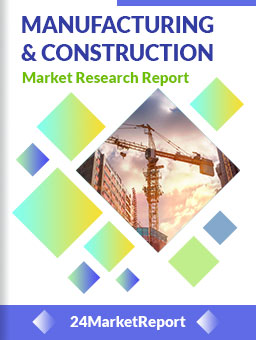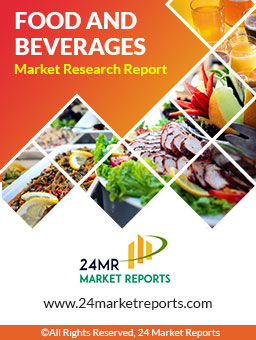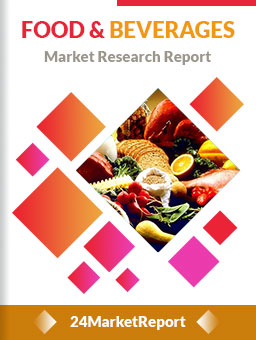
Download FREE Report Sample
Download Free sample
MARKET INSIGHTS
The global High Pressure Processing (HPP) Pet Food market was valued at USD 546 million in 2024 and is projected to reach USD 931 million by 2032, exhibiting a CAGR of 8.1% during the forecast period.
High Pressure Processing (HPP) pet food utilizes ultra-high pressure purified water to eliminate harmful bacteria such as Listeria, E. coli, and Salmonella while preserving nutritional value. This innovative cold pasteurization technique maintains food safety without chemical preservatives, meeting growing consumer demand for natural pet nutrition solutions. The technology operates at pressures ranging from 400-600 MPa, effectively extending shelf life while retaining taste and nutrient bioavailability.
The market growth is driven by increasing pet humanization trends, with 66% of U.S. households owning pets according to APPA data. Furthermore, the German pet market recorded 33.4 million pets in 2022 (IVH), while China's pet food segment represents 35% of its USD 358 million pet care industry (JD.com). Key industry players like Stella & Chewy's and Primal Pet Foods continue expanding their HPP product lines, capitalizing on premiumization trends in the USD 261 billion global pet industry.
Rising Pet Humanization Trend Accelerates Demand for Premium Nutrition
The global premium pet food market is experiencing unprecedented growth, with HPP-treated products gaining significant traction. Pet owners increasingly view their companions as family members, driving demand for human-grade nutrition. Recent studies indicate that over 70% of millennial pet owners prioritize ingredient quality and safety when selecting pet food, creating ideal conditions for HPP adoption. This technology preserves nutritional integrity while eliminating pathogens—a critical advantage in the fresh pet food segment which grew at 15% CAGR from 2020-2023.
Stringent Food Safety Regulations Propel HPP Adoption
To know more about market statistics, Download a FREE Sample copy
Regulatory scrutiny on pet food safety has intensified globally following multiple contamination incidents. HPP technology effectively addresses these concerns by achieving 5-log reduction of pathogens like Salmonella and E. coli without chemical preservatives. The technology's validation by major food safety organizations has made it particularly valuable for manufacturers navigating complex export markets where microbiological standards continue to tighten annually.
High Capital Expenditure Limits Market Penetration
While HPP delivers unparalleled safety benefits, commercial-scale equipment requires investments exceeding $2 million per unit, creating barriers for small-to-medium manufacturers. The technology's batch processing nature also impacts production scalability compared to thermal alternatives. These factors currently restrict HPP utilization to premium product lines, with adoption rates below 15% in the broader wet pet food category despite strong consumer demand indicators.
Additional Constraints
Packaging Limitations
HPP requires specialized flexible packaging capable of withstanding 87,000 psi pressures, adding 20-30% to material costs compared to conventional options. Compatibility issues with certain multi-layer materials further complicate supply chain logistics for manufacturers.
Cold Chain Dependency
Unlike thermally processed alternatives, HPP products require uninterrupted refrigeration from production to point-of-sale. This creates distribution challenges in developing markets where cold chain infrastructure remains inconsistent, limiting geographic expansion potential.
Emerging Markets Present Untapped Growth Potential
Asia-Pacific represents the fastest-growing regional market, with premium pet food sales projected to exceed $12 billion by 2026. While HPP penetration currently sits below 5% in these markets, rising disposable incomes and western influence are creating ideal conditions for expansion. Strategic partnerships with local distributors could unlock this potential, particularly when combined with educational campaigns highlighting HPP's safety advantages over traditional preservation methods.
Technological Advancements Reduce Operational Barriers
Recent innovations in high-pressure processing equipment are addressing key adoption challenges. Next-generation systems achieve 30% faster cycle times while consuming 25% less energy, significantly improving production economics. Concurrent developments in pressure-resistant packaging materials are also lowering total system costs, making HPP increasingly viable for mid-tier product segments.
Consumer Education Gap Hinders Premium Positioning
Despite HPP's scientific advantages, many consumers remain unfamiliar with the technology's benefits. Market research indicates only 28% of pet owners can accurately describe high-pressure processing, creating marketing hurdles for brands. This knowledge gap allows cheaper preservation methods to maintain market share through aggressive pricing strategies, forcing HPP producers to allocate significant resources to consumer education initiatives.
Additional Market Challenges
Supply Chain Complexity
HPP's short shelf life requirements (typically 45-60 days) necessitate Just-In-Time production models and sophisticated inventory management. These logistical complexities become particularly problematic during seasonal demand fluctuations or supply chain disruptions.
Talent Shortage
The specialized nature of HPP technology has created a shortage of qualified technicians capable of operating and maintaining equipment. Training programs have struggled to keep pace with industry expansion, with some manufacturers reporting 6-9 month lead times for hiring certified operators.
Dog Food Segment Dominates the Market Due to Rising Pet Ownership and Premiumization Trends
The market is segmented based on type into:
Dog Food
Cat Food
Other Pet Food
Offline Sales Lead Through Specialty Pet Stores and Veterinary Distribution Channels
The market is segmented based on application into:
Online Sales
Offline Sales
Companion Animals Drive Growth Through Humanization Trends
The market is segmented based on pet type into:
Dogs
Cats
Other Companion Animals
Flexible Packaging Gains Traction Due to Convenience and Portability
The market is segmented based on packaging type into:
Flexible Packaging
Rigid Packaging
Semi-Rigid Packaging
Market Leaders Expand Through Innovation and Strategic Partnerships
The global High Pressure Processing (HPP) pet food market exhibits a dynamic competitive environment where established brands compete with emerging players through product differentiation and geographic expansion. Freshpet dominates the industry with approximately 22% market share in 2024, leveraging its proprietary HPP technology and strong retail partnerships across North America. The company's refrigerated distribution network gives it a distinct advantage in maintaining product freshness, a critical factor driving consumer preference.
Stella & Chewy's and Primal Pet Foods collectively account for nearly 31% of the market, benefiting from their early adoption of HPP for raw pet food sterilization. Both companies have significantly expanded their product lines in 2023-2024, introducing novel protein sources like bison and rabbit to cater to pets with dietary sensitivities. This product diversification strategy has enabled them to command premium pricing while expanding their customer base.
Meanwhile, European players like PETKIS and Kiwi Kitchens are making strategic inroads by focusing on sustainable packaging and locally sourced ingredients. Their regional expertise in complying with EU pet food regulations gives them competitive leverage in those markets, though they face challenges scaling globally due to high logistics costs associated with refrigerated HPP products.
Freshpet (U.S.)
Stella & Chewy's (U.S.)
Primal Pet Foods (U.S.)
Steve's Real Food (U.S.)
Nature's Variety (U.S.)
Bravo (U.S.)
The Raw Truth (Canada)
PETKIS (Germany)
Kiwi Kitchens (New Zealand)
Balanced Blends (U.S.)
Northwest Naturals (U.S.)
Vital Essentials (U.S.)
The global pet food industry is undergoing a significant transformation, with pet owners increasingly prioritizing premium, natural, and minimally processed options for their companions. High Pressure Processing (HPP) technology has emerged as a key enabler of this trend, as it eliminates harmful pathogens without compromising nutritional integrity or requiring chemical preservatives. The market for HPP pet food is projected to grow at a compound annual growth rate (CAGR) of 8.1% from 2024 to 2032, reaching a valuation of $931 million. This growth is fueled by rising pet humanization trends, with over 66% of U.S. households now owning pets and showing willingness to invest in higher-quality nutrition solutions.
Expansion of E-Commerce Channels
The proliferation of online pet food sales is accelerating HPP pet food market penetration. E-commerce platforms now account for nearly 25% of premium pet food sales globally, providing manufacturers with direct access to health-conscious consumers seeking fresh, preservative-free options. The convenience of doorstep delivery combined with growing awareness about food safety is creating a powerful growth vector for HPP-treated products, particularly in urban markets where refrigeration logistics are well-established.
Recent innovations in HPP machinery are making the technology more accessible to mid-sized pet food manufacturers. New generation systems offer 30-40% greater energy efficiency compared to models from five years ago, while achieving superior microbial reduction rates of 99.999% for common pathogens like Salmonella and Listeria. These improvements are reducing production costs and enabling broader adoption across price segments. Furthermore, advancements in flexible packaging solutions specifically designed for HPP-treated products are extending shelf life while maintaining product freshness and texture characteristics that pets prefer.
North America
North America dominates the HPP pet food market, accounting for over 40% of global revenue in 2024. The U.S. leads consumption, driven by 66% household pet ownership and annual industry sales surpassing $136 billion. Consumer demand for premium, pathogen-free pet nutrition combined with strict FDA food safety standards favors HPP adoption. Major brands like Stella & Chewy's and Primal Pet Foods continue innovating with pressure-processed raw diets. However, higher production costs compared to traditional methods remain a barrier for price-sensitive segments. The region benefits from established cold chain logistics supporting HPP product distribution. Canada shows growing potential with increasing disposable income allocated to pet care.
Europe
Europe represents the second-largest HPP pet food market, with Germany and the U.K. as key adopters. Germany's 33.4 million pets generate substantial demand for high-quality nutrition, while EU food safety regulations align well with HPP preservative-free preservation. Organic and natural pet food trends gain traction, particularly in Nordic countries where 42% of pet owners prioritize sustainable products. Challenges include higher energy costs for HPP operations and fragmented pet food regulations across member states. The U.K. market shows resilience post-Brexit, with online sales of premium pet foods growing 18% annually. Eastern Europe presents untapped opportunities as urbanization increases pet ownership rates.
Asia-Pacific
APAC is the fastest-growing region, projected to expand at 10.2% CAGR through 2032. China's $14 billion pet food market leads adoption, with HPP positioned as a premium offering in major cities. Japan's aging pet population drives demand for specialized nutrition, while South Korea sees rising interest in human-grade pet foods. However, cost sensitivity limits mass-market penetration, with HPP products typically priced 3-5x above conventional options. India shows emerging potential with its 32 million pet dogs, though refrigeration infrastructure gaps hinder cold chain distribution. Southeast Asian nations increasingly import HPP pet foods as middle-class expenditure on companion animals grows 12% annually.
South America
Brazil anchors South America's developing HPP pet food sector, with the region representing under 8% of global market share. Urban professionals demonstrate willingness to pay premiums for imported HPP brands, particularly in Argentina and Chile. Economic volatility and currency fluctuations create pricing challenges, causing many manufacturers to focus on conventional processing methods. Pet humanization trends among younger demographics and increasing awareness of food safety present long-term opportunities. Cold storage limitations outside major cities restrict market expansion, though investments in logistics infrastructure show promise for future growth.
Middle East & Africa
The MEA region shows nascent but promising HPP adoption, concentrated in UAE and Saudi Arabia where expatriates drive demand for premium imported pet foods. Dubai's 58% pet ownership rate among high-income households supports specialty retailers offering HPP products. Limited local production capabilities result in reliance on expensive imports, while hot climates pose distribution challenges. South Africa emerges as a potential growth market with increasing pet spending among urban consumers. Religious and cultural factors influence product formulations, creating opportunities for halal-certified HPP pet foods tailored to regional preferences.
This market research report offers a holistic overview of global and regional markets for the forecast period 2025–2032. It presents accurate and actionable insights based on a blend of primary and secondary research.
✅ Market Overview
Global and regional market size (historical & forecast)
Growth trends and value/volume projections
✅ Segmentation Analysis
By product type or category
By application or usage area
By end-user industry
By distribution channel (if applicable)
✅ Regional Insights
North America, Europe, Asia-Pacific, Latin America, Middle East & Africa
Country-level data for key markets
✅ Competitive Landscape
Company profiles and market share analysis
Key strategies: M&A, partnerships, expansions
Product portfolio and pricing strategies
✅ Technology & Innovation
Emerging technologies and R&D trends
Automation, digitalization, sustainability initiatives
Impact of AI, IoT, or other disruptors (where applicable)
✅ Market Dynamics
Key drivers supporting market growth
Restraints and potential risk factors
Supply chain trends and challenges
✅ Opportunities & Recommendations
High-growth segments
Investment hotspots
Strategic suggestions for stakeholders
✅ Stakeholder Insights
Target audience includes manufacturers, suppliers, distributors, investors, regulators, and policymakers
-> Key players include Steve's Real Food, Primal Pet Foods, Nature's Variety, Stella & Chewy's, Bravo, The Raw Truth, Freshpet, PETKIS, Kiwi Kitchens, Balanced Blends, Northwest Naturals, and Vital Essentials, among others.
-> Key growth drivers include rising pet ownership rates, increasing awareness of pet health, demand for chemical-free food preservation, and technological advancements in HPP processing.
-> North America currently leads the market, while Asia-Pacific is expected to show the highest growth rate due to increasing pet humanization trends.
-> Emerging trends include expansion of product portfolios by key players, development of customized HPP solutions, and growing adoption in emerging markets.

Speak to our Custom Research Team and get the Custom Research in a budget
Custom ResearchFrequently Asked Questions ?
A license granted to one user. Rules or conditions might be applied for e.g. the use of electric files (PDFs) or printings, depending on product.
A license granted to multiple users.
A license granted to a single business site/establishment.
A license granted to all employees within organisation access to the product.
Upto Working 24 to 48 hrs
Upto 72 hrs max - Weekends and Public Holidays
Online Payments with PayPal and CCavenue
Wire Transfer/Bank Transfer
Hard Copy




 Industry Market Size
Industry Market Size SWOT Analysis
SWOT Analysis Industry Major Players
Industry Major Players Revenue Forecasts
Revenue Forecasts Historical and Forecast Growth
Historical and Forecast Growth Profitability Analysis
Profitability Analysis
























